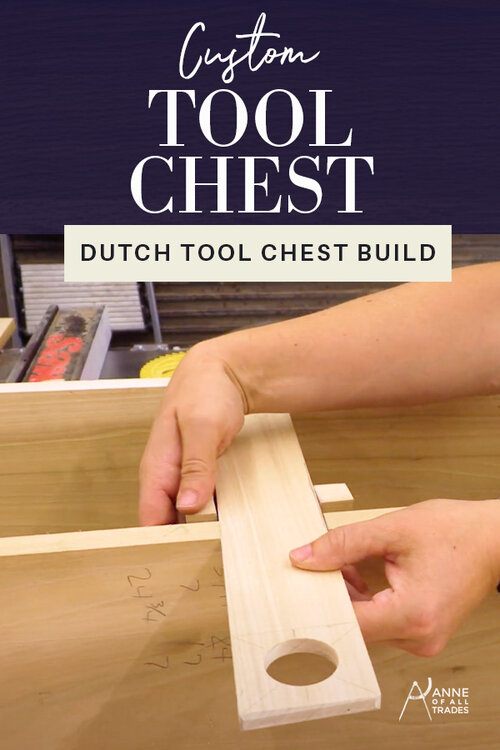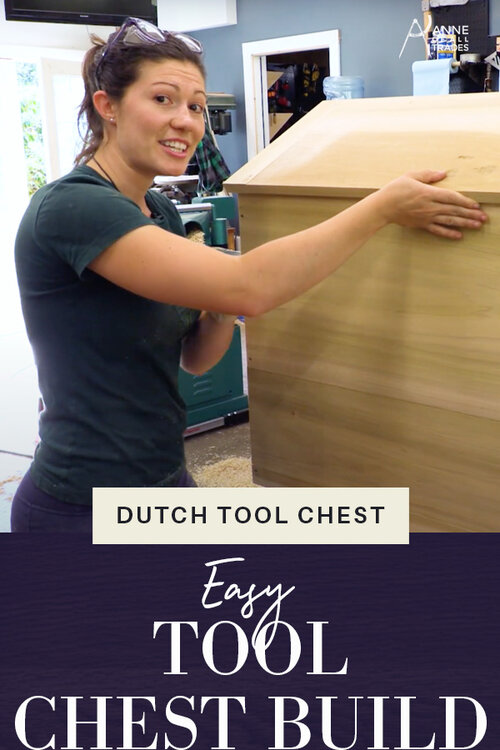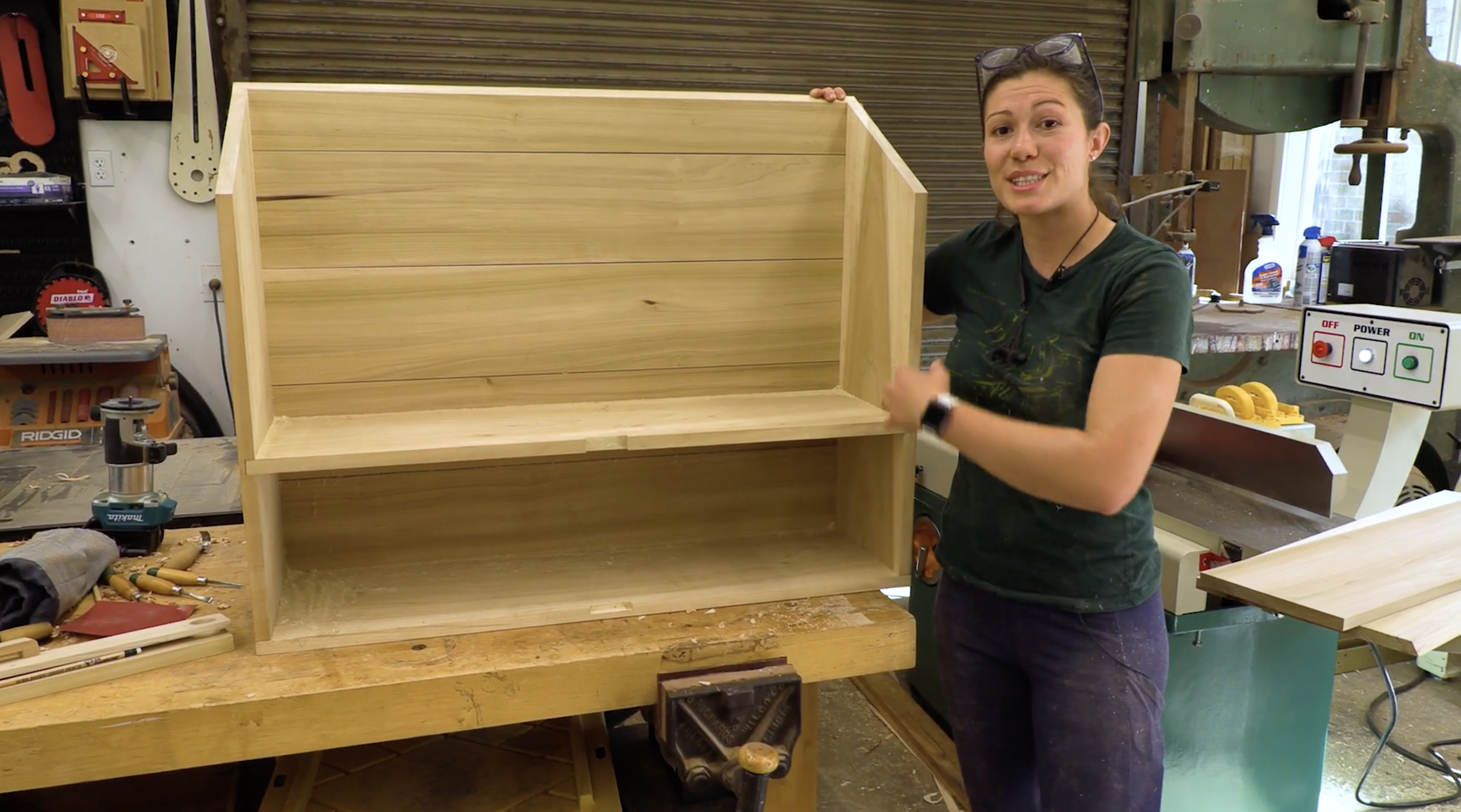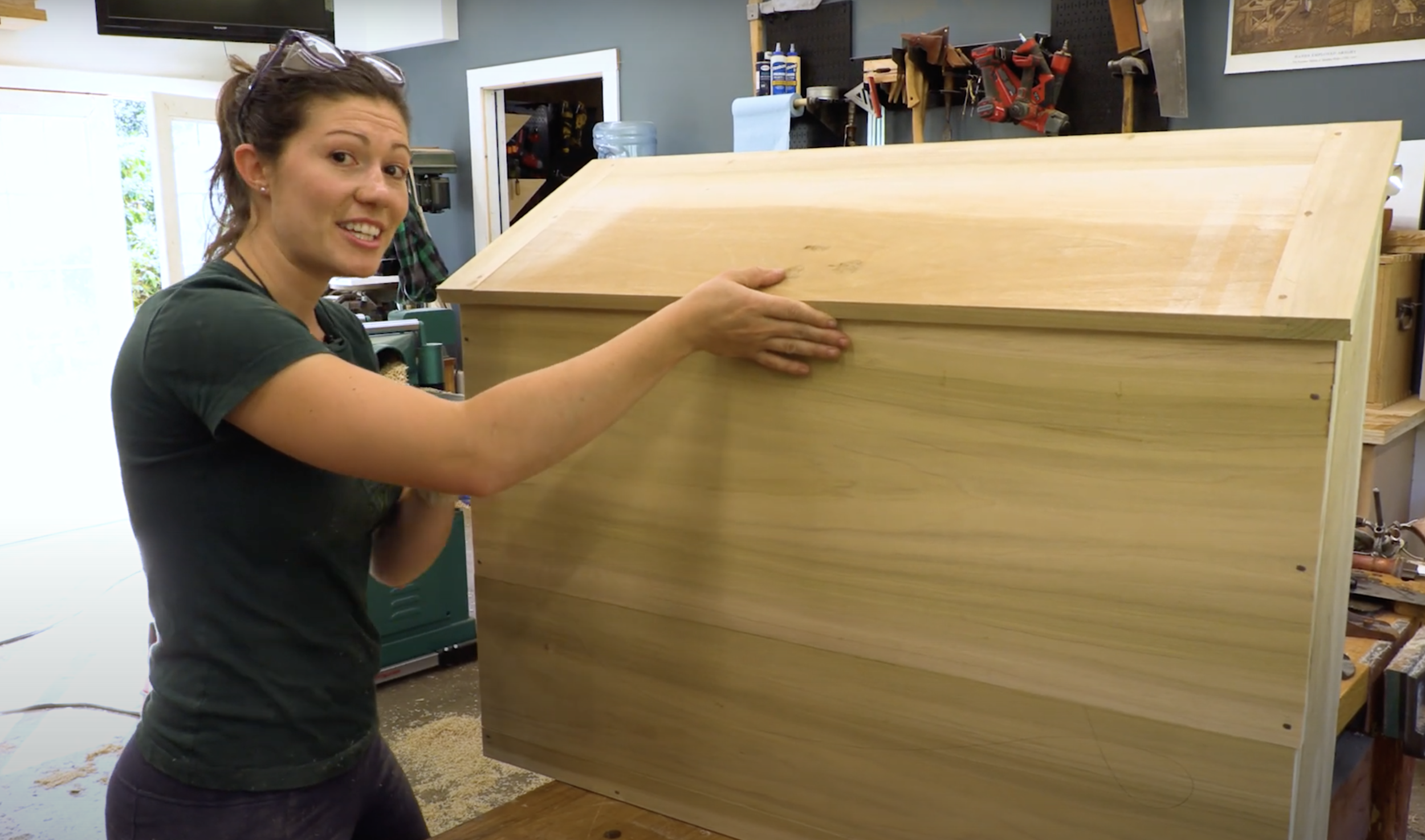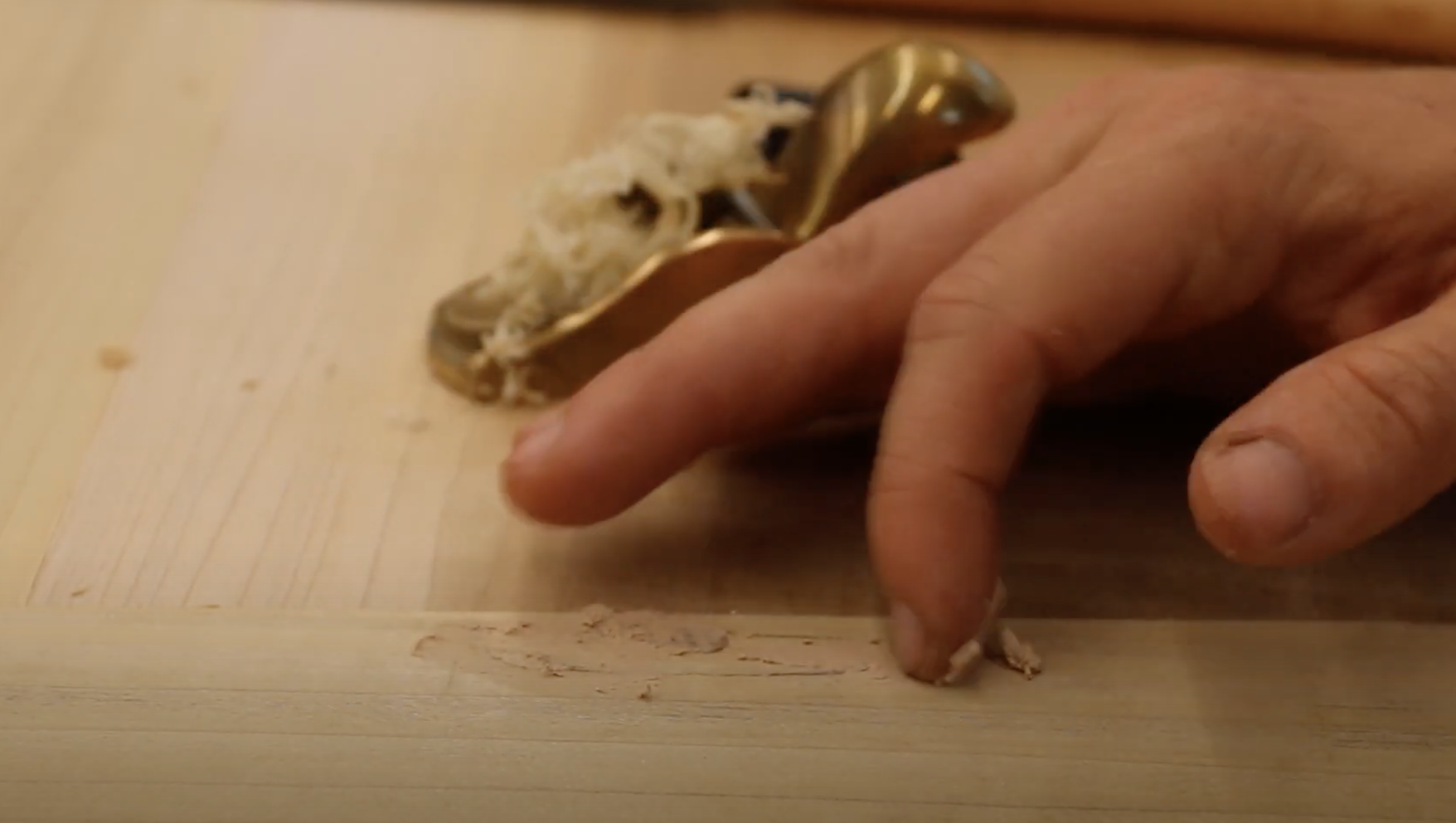Build a Dutch Tool Chest
Building a dutch tool chest is a fantastic exercise in many different kinds of joinery, and gives you a place that you can take an entire furniture building shop’s worth of hand tools on the go. See step by step how I repurpose a bookshelf and turn it into a Dutch-style tool chest.
Why I Love This Project
The real catalyst for this project came not only because my friend Isaac is going to need a spot to store all of his restored tools, but also because I had a bookshelf project that I had created while I was teaching at Port Townsend School of Woodworking that I didn't need to keep because I've now taught that class enough times that I have way too many of those bookshelves.
One of the things I love about woodworking is it allows you to look at a piece of furniture, materials, wood scraps, etc., and see ways that you can repurpose them to bring them new life. That’s precisely what I’m doing with this toolbox build.
Looking At Materials Differently
When looking at the dovetailed bookshelf that I no longer needed, I realized I could actually just flip it upside down, cut an angle on the top, and make a Dutch tool chest that really repurposes the wood and the joinery that I'd already cut in that way.
Because this project was already at this stage, the video above does not show cutting the dovetail portion of this project. If you need a refresher course you can visit this post on how to cut dovetails.
Building a Dutch Toolchest
Cutting the top angle
The first thing that I had to do to turn this bookshelf into a Dutch tool chest was to cut a 30-degree angle on both sides of the bookshelf.
Tongue and groove backing
Next, I cut the tongue and groove backing for the chest. The reason for this backing is to allow for expansion and contraction of the back panels. The tongue and groove joinery will keep it from cutting or twisting during seasonal wood movement.
We've also used spacers to keep these apart so that again, there is that room for expansion and contraction.
cut nails vs. screws
A lot of people are going to wonder why I used cut nails instead of screws for this tool chest. The simple truth of the matter is because it was traditional, but they also create a little form of joinery on their own. We want to put the cut nails in such a way that the thicker part of the nail goes with the grain direction which causes it to actually wedge into the board that you're attaching it to. (This also reduces the chance of splitting the wood.)
chamfer plane for detail
Another step that I did (which is completely optional) is to chamfered each one of the boards with a chamfer plane. There's going to be a little space anyway because I used a spacer and I feel like that looks a little tacky if you don't create some other visual interest around it, so the chamfer plane makes perfect sense to us there.
racking
Another quick structural note on this is that yes, this tool chest design only has two dovetails on either side and yes, that is potentially weak. We're going to have, however, nailed portions on both the back and the front sides, which will alleviate the potential for racking of any kind.
secret fall front
My favorite aspect of the Dutch tool chest design is the secret fall front. The top front panel gets nailed on, and this acts as a little key that allows the bottom front panel to open by falling away revealing a secret compartment for more tool storage.
making the “key”
The first step in that was to make the key, and I did that by resawing a piece on the bandsaw. I went ahead and drilled a little finger hole or a handle hole. Then I had to make the little piece that was going to go on the fall front. I rounded off the edges to make it pretty and I had to route the slots in all three places where this is going to find its home.
I cut those sides with a handsaw first because I never trust myself with a router and a finished piece that's already part of the finished project.
cut the angle
I used my palm router to route out all of the areas that needed waste excavated. I just cut this angle here on the table saw roughly and I will fine-tune it with a hand plane shortly. I wanted to leave both ends a little bit longer so that I can flush everything up with a hand plane later.
One nice thing about hand tool woodworking is that if somehow anything ends up not being quite square, you have a little bit of wiggle room at the end of the project to get it there. But obviously, you always want to aim for perfection if you can. So I want this tool chest to be perfectly centered in every way.
pre-drilling
You notice my cut is a little high, so we’ll take that down with a hand plane. If you're a masochist like me, you can use a hand drill for this portion, or you can use a regular power drill. I feel like when I'm using cut nails, I'm somewhat obligated to use a hand drill simply because of what it is.
Pro Tip: One other quick note about the drill bit is that it's about half the size of halfway up the nail. So we want to get the dovetail power from that triangle shape of the nail, but we also don't want to fully split the piece.
As I'm going into this, I'm making sure to place the nail in such a way that it can go straight in, and it's not going to wedge the wood apart at its weakest point.
So we'll put the first nail in, and then we'll put the opposing nail on the other side. We want to make sure that everything's good for this first one.
Pro Tip: When you're hammering you want to always be as close over one of the legs of your benches as you possibly can, so you get the most purchase for every hit from your nail.
catch for the fall front
The next thing that we need to do is make a little catch for the front of the fall front. I just used a piece of wood that I ripped to size, then used a power drill to attach it.
fitting the final piece
Now comes a very interesting little piece of the build which is fitting this last piece. Be sure to watch the video to see exactly how I measure and mark the piece to know where to cut, then again how I mark it to come back with the hand plane to make it fit.
planing the final piece
This last piece needs to be planed at a bit of an angle so that it can actually open and shut, but still be flush when closed.
Back ends
Now that we've got the final piece fit, we want to create some back ends. To hold it on, we're just going to use a couple of cuts and just make sure that they go down inside the piece and sit flush. (Watch the video to get a better look at this portion.)
using krazy glue in the woodshop
Krazy glue may seem like a strange integration for a project like this where I’m using traditional hand tools, but sometimes I need to get quick-clamping pressure but I don’t have time to let traditional glue set up overnight.
In the end, the nails are what is going to provide the holding power for this piece, but to get a quick assist so my piece doesn’t move around while I’m nailing it in place, I use a thin bead of glue. In a matter of seconds is pretty secure and I can go ahead and nail it in place.
While we nail it in place, I want to make sure that I accommodate the width of the wall of the chest. I want to make sure that it's on there nice and square.
The last step is to attach the key holder onto this piece. So I just place it in and carry over those lines by some glue. Now we're gonna want to clamp this in place because we want this to have a really good connection here. I'm putting a clamp on this to make sure that it gets absolute even adhesion.
Somehow when I was doing my dry boring process, I actually forgot to drill the opposing side of this hole. So I went to knock the peg in I actually knocked this whole piece of wood out.
So, with Krazy Glue, I was able to quickly grab those shards of wood that came shooting out of the hole, I put them back in, planed it, flush filled it with a little wood filler, and within minutes had a fully complete repair of the piece. Once there's paint on the top of the chest, you'll never see that again.
So now with our fully secured keyhole, we have every component for a full chest.
I’m going to actually hand forge some handles for this chest so that portion of the build won’t be shown here. If you want to see how I hand forge chest handles, you can catch that YouTube video over on my channel.
Fitting the Interior of the Chest (AKA: French Fitting)
We're going to move straight to the fitting of the interior of the chest. The real fun of this tool chest is the incredible amount of tools that you can actually fit into it. I mentioned at the beginning that you can fit an entire workshop full of tools into the chest. However, if you are going to be taking your chest from place to place, you're going to want to fit everything into a specific place.
Of course, if we're just having it in our shop, we could just set our tools into it. But because I often take my chest on the road when I'm teaching classes or whatever else, I want to make sure that every single tool not only has its place so that I can see that there's something missing, but also that every tool is securely put in its place so that it can't get jostled around while I'm traveling from place to place.
A lot of people will call this process French fitting. You're basically making a special hole for each tool, and then arranging things so that they have a very specific way that they go inside the chest.
Now, this is a process that's very specific to whatever tools that you are storing in your chest. I’ve included the video below where I show everything that I’ve fit into my Dutch tool chest, but yours may look completely different based on the tools you have.



